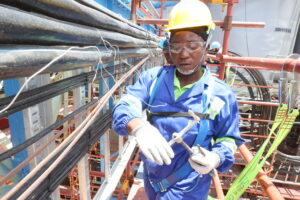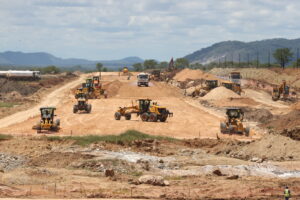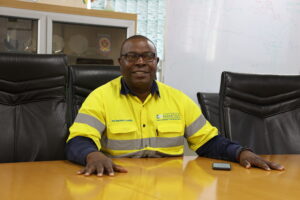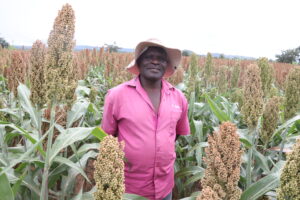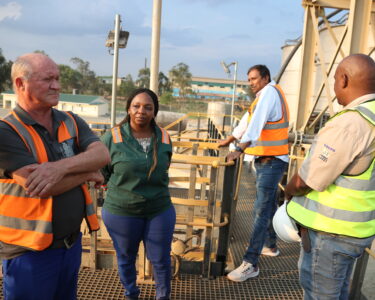Zvishavane-based platinum group metals (PGM) producer, Mimosa Mining Company (MMC), is thinking big as it seeks to contribute significantly to the country’s US$12 billion mining target set for this year. As our Editor-in-Chief Munyaradzi Huni reports, Mimosa has already made significant progress towards implementing two major projects, namely the Plant Optimisation Project, which will boost the plant’s overall efficiency, and the new Tailings Storage Facility, which will see an improvement in the sustainable disposal of mining waste. The two projects have a combined budget of slightly over US$100 million, split as follows: US$65 million for the Tailings Storage Facility and US$38 million for the Plant Optimisation Project.
Jointly owned by South Africa’s Sibanye-Stillwater and Impala Platinum, Mimosa operates on the southern portion of the Zimbabwean Great Dyke near Zvishavane town and the mine site, South Hill, is projected to run out in about 10 years’ time.
While Mimosa is best known as a producer of platinum, the company actually mines 10 metals. It started out as a nickel mine, before switching to the platinum group metals (PGMs, for short) as market demands shifted. The 10 metals include rhodium, palladium, ruthenium, gold, silver, iridium, nickel, copper and cobalt.
It might actually come as a surprise to Brick by Brick readers that platinum contributes only 20% of the company’s revenue with 80% being generated by the other nine metals.
The new Tailings Storage Facility and the Plant Optimisation Project are part of long-term plans to develop a new mining site called North Hill that is expected to boost the mine’s life by another 22 years.
According to the general manager, Steve Ndiyamba, exploration works have been completed at the North and South Hill claims as part of the shaft development programme to extend the mine’s lifespan. The company would invest “plus or minus US$90 million-US$100 million into North Hill to get another 12 years”, he said, adding: “If we explore and investigate the other ore bodies and there is value, we might get another 10 years.”
Mimosa has been growing over the years and has reached a stage where it is removing bottlenecks that were crippling efficiencies, says Ndiyamba. The Plant Optimisation Project was, therefore, designed to de-bottleneck various areas of the plant so as to create additional capacity and recover more ounces of platinum from the same amount of ore.
A glimpse into the Plant Optimisation Project . . .
Taking the Brick by Brick magazine team on a tour of the mine, the head of projects, Brian Matingwina, had this to say: “Over the years, the plant has become too small to meet our objectives. At the moment we are processing about 235 000 tonnes per month, which is way above its design capacity of 185 000 tonnes. In other words, what we are doing is producing excess by simply optimising our processes without necessarily increasing the plant’s capacity.
“But the end result was that some inefficiencies started creeping into the process. The key measurable efficiency of any processing plant of this nature is the recovery rate. By this I mean, if you feed ore into the plant at, say, two grammes per tonne, how much of those two grammes are you able to get out, pack and sell?
“At design, our target was about 77.2% recovery. It has fallen over the years to around 75%. So what we are doing now is to actually scale it up to around 78.9%. The question is: How do we do that? Or more precisely: Which efficiencies did we compromise?
“There is what we call grind. For the plant to process ore efficiently, it need to be ground it to a certain specification. In this case, it must be 80% of the materials after milling, or round 75 microns in mining jargon. The bottom line is the more raw material we fed into the plant, the less optimum grind we achieved, thereby compromising the quality of our end product.
“On the other hand, the minimum processing time from the time the feed gets into the plant to the time it either comes out as waste or as finished product is 35 minutes. However, the fact that we were feeding more into the plant, meant that the residence [processing] time was also compromised to a greater extent.
“The goal of this Plant Optimisation Project is to restore those two measures to industry standards. First and foremost, we want the grind to be 75 microns and, number two, we want to maintain the residence time at 35 minutes. If we do that, we should achieve the targeted recovery rate which is around 78.9%, according to our research findings. So this is basically what we are doing.
“In the final analysis, we are not going to increase our feed. We are simply going to increase what we get out of the plant as a result of improved efficiency. Our objective is to improve metal recoveries through the installation of an additional 19 flotation cells and a 4.6MW secondary mill.
“We also have put in place an additional transformer. Under normal circumstances, the transformer would be Zesa’s responsibility. But as part of our corporate social responsibility programme and determination to improve our operational efficiencies, we took it upon ourselves to install a 40MW transformer. It comes with a power-factor-correction system. This is a vital component because, due to the ongoing power challenges, we want to efficiently utilise whatever power we are able to generate. There is also a switchgear to support the equipment. In summary, this is what the Plant Optimisation Project is all about,” explained Matingwina.
Quite technical stuff, but then mining is a highly technical field.
. . . followed by the Tailings Storage Facility
“The Tailings Storage Dam is commonly referred in some circles as ‘dumps’. As far as Mimosa is concerned, 97% of what we mine and process is waste. So, for every 100 kg that we mine, only 3 kg goes for further processing. The other 97 kg is waste, which goes to the Tailings Storage Facility, without which this place would not function.
“It’s a facility which is technically designed to make sure that our operations are environmentally safe. The Tailings Storage Facility itself is located in such a position it doesn’t pose a danger to Mimosa staff or the surrounding communities now or in the future.
“A couple of years ago, we were faced with a situation where the current Tailings Storage Facility (TSF) was nearing the end of its life. To be more precise, it’s going to reach its maximum deposition in June next year. So in the absence of this new storage facility, Mimosa was going to cease its operations mid-next year.
“So this Tailings Storage Facility will guarantee us more life going into the future. The question is: How much more life? The new Tailings Storage Facility, TSF4, has got the capacity to serve our needs for the next 20 years. During those 20 years, we can undertake dump reprocessing. By this, I mean we can reprocess the contents of TSF3 and TSF2 and dump them into TSF4, whose carrying capacity is 111.9 million tonnes. Of that, about 55.6 million tonnes relates to reprocessing of existing dumps.
“In terms of surface area, TSF4 is going to cover 165 hectares, which will also accommodate what we call a return-water-dam. The return-water-dam will impound all the water released from our operations, so that it does not find its way to areas inhabited by our surrounding communities.
“The good thing is that our water is not contaminated because we don’t use harmful chemicals. But as a good citizen, it is not our wish to contaminate downstream water bodies. When the day comes for Mimosa to cease its mining operations, the dam will be turned into a recreational facility. In this vein, this dam will also capture water from outside our operations,” said Ndiyamba, as he envisioned his company’s legacy.
“We are fully aware that mining, like most extractive industries, is finite. At some point zvinopera and so we want to leave a legacy. The community must continue to flourish way after Mimosa is gone and our projects are geared towards that. We have done a lot in terms of health, infrastructure, education, etc, but those address today’s needs. As Mimosa, we are looking beyond that. We want to capacitate the community so that they can, as much as possible, take care of themselves.
“Take our Livestock Revitalisation Programme, for example. After providing heifers to the communities, our next target is to beef up the marketing side of things. Our objective in this context is to ensure that farmers are not ripped off by unscrupulous middlemen. In short, the Livestock Revitalisation Programme is an empowerment tool. The same goes for our sorghum project. We want this whole community to be self-sufficient in terms of food security. In light of this, we have sponsored selected farmers to grow sorghum and they have done exceedingly well.
“All these projects are meant to empower the community. We don’t want members of the community to be too-reliant on Mimosa. We want them to be self-sufficient. If you look at the communities around us, none of them relies on handouts. This is what we want to see and we are going to play our part in ensuring that the majority of our surrounding communities achieve this.
“In addition, we have set up a Local Enterprise Development Programme which is targeted at projects with high income potential. We help the beneficiaries to produce efficiently so that they grow their own businesses long after Mimosa has weaned them off,” said Ndiyamba, underlining Mimosa’s determination to bequeath the local communities with a lasting legacy, and not holes in the ground.




